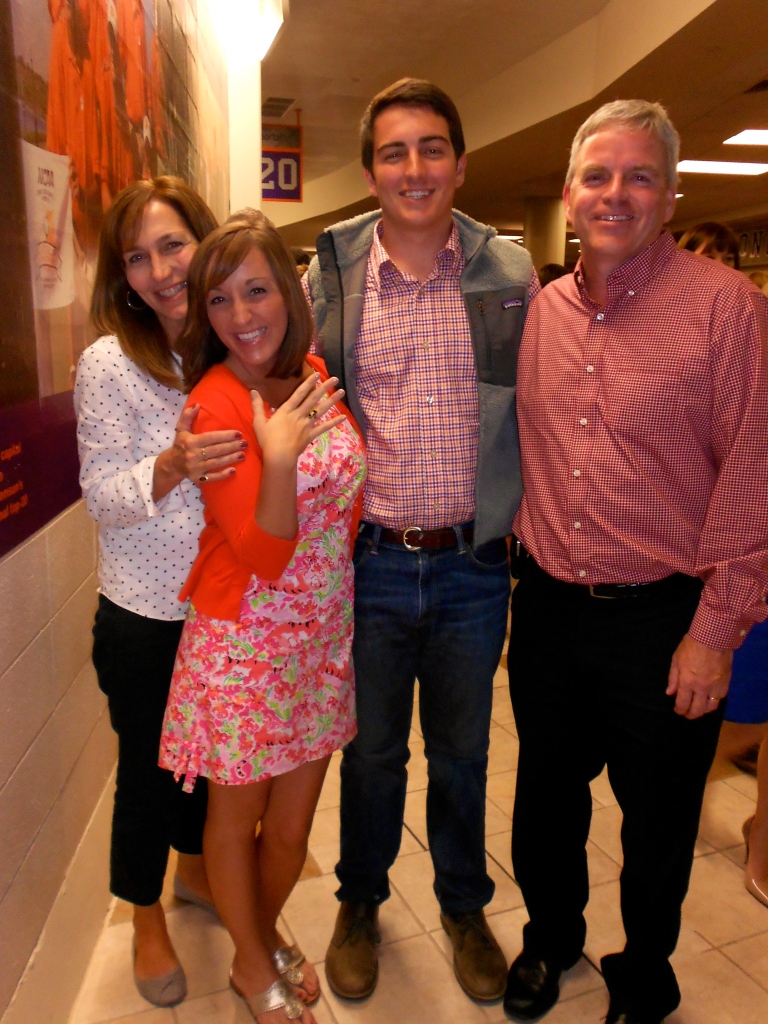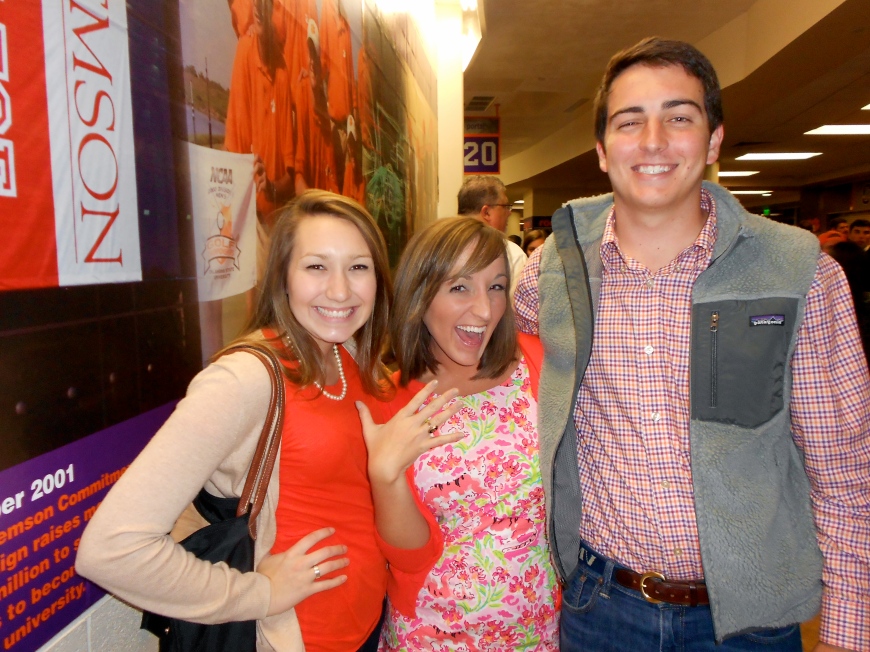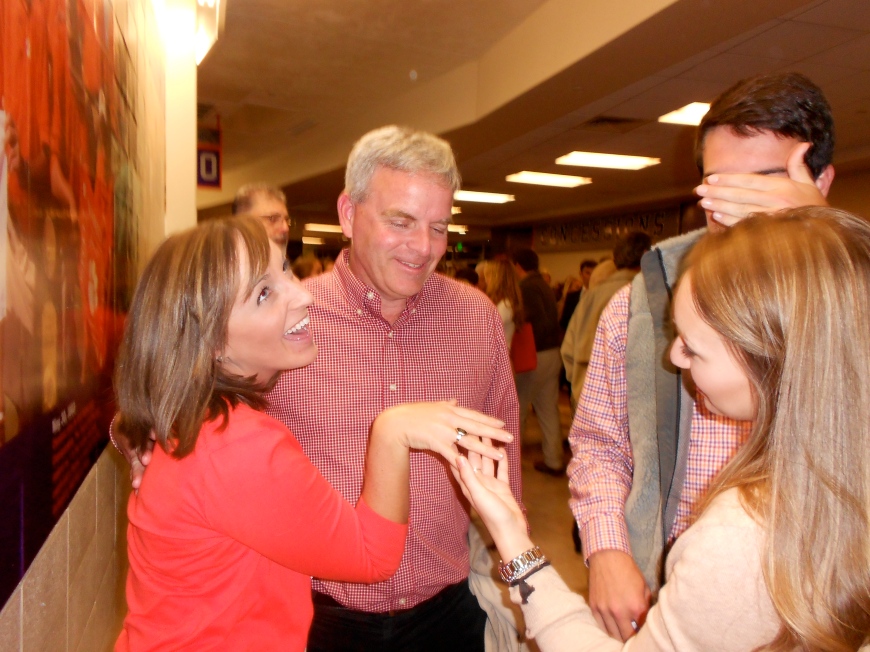-Joe Sherman
After tonight, not only can I proudly say I go to Clemson, but I can also show them with my beautiful new class ring!
Ta-da! Here it is, in all its glory!
I am so thankful I have people who are wonderful enough to support me through a two and a half hour long ring ceremony... Yikes. Although it was dreadfully long, I guess I would have seen that coming if I'd known in advance that approximately 1300 people planned on getting their rings tonight! I'm glad my parents made the two and a half hour drive here and back home all for a couple of hours in our basketball coliseum. That's love! Even though Corey and Morgan didn't have a super long drive post-ceremony, I was still so thankful to have them there.
My family is the biggest blessing.
Notice a pattern with the pose?!
Super thankful Mowgie suggested an "admire the ring" picture (even though she's the only one remotely interested in the pic).
Hands down, the most special part of the ceremony was hearing from Colonel Ben Skardon, from the class of 1938. Colonel Skardon makes it a priority to speak at the Clemson class ring ceremonies and talk about the sentimental value the Clemson ring has to him, thanks to some amazing sacrifices.
I couldn't possibly do his story justice, so here it is in his own words, from the Clemson Alumni site:
"During the months that followed the fall of Bataan to Japanese Army Troops [WWII] and the subsequent imprisonment of captured American troops at the large POW camp at Cabanatuan in Central Luzon (the main island of the Philippines), the physical condition of many POWs deteriorated. Hundreds died from lack of sufficient food, medicine and medical care. At this time, I was fortunate to have teamed up with two fellow officers who were Clemson graduates: Henry Leitner ’37 and Otis Morgan ’38.
As conditions worsened, I became a victim of beriberi, malaria, diarrhea, and an eye infection. I had no appetite, and I could hardly swallow. Henry and Otis took turns spoon-feeding me, cleaning my eyes, carrying me piggyback to an open latrine, washing me and carrying me back to our nipa shack.
Most of our personal possessions had disappeared; however, I had managed to keep my Clemson class ring hidden. Otis, who worked on “the farm” as an “in-charge” (an American who could understand enough Japanese to pass on the instructions to the POW work details), let it be known that he knew of a gold ring available for trade to the Japanese for food.
A deal was made, and one evening Otis came in from the farm with a small can of potted ham and a live pullet-sized chicken. Henry borrowed a tin pail, built a fire and boiled the chicken. They fed me hot chicken soup, chicken with rice and rice with chicken. Nothing was left except the bones, which by that time, were gleaming white. They broke the bones and retrieved the marrow with a piece of wire. Nothing edible remained. The little can of potted ham was used to make highly flavored rice-balls. These delectable little nuggets seemed to restore my appetite, and my physical condition improved.
My debt to Henry Leitner and Otis Morgan is heavy – it cannot be repaid. Otis was killed aboard an unmarked ship carrying POWs to Japan. Henry died in early 1945 at a POW camp in Japan. [Skardon was eventually freed from a POW camp in Manchuria after Japan’s surrender.]
Hardly a day goes by that I do not remember the selflessness and the personal sacrifice of Henry and Otis and the role my Clemson class ring played in keeping me alive."
— Colonel Ben Skardon ‘38
How incredible is that?! Definitely the coolest part of the ceremony. Sharing something as simple, beautiful, and powerfully symbolic as a ring with men like Colonel Skardon and women like my mom make me feel like the luckiest girl alive! So proud of my school!
Go Tigers! Mom and me proudly sporting our rings.
-Joe Sherman







No comments:
Post a Comment